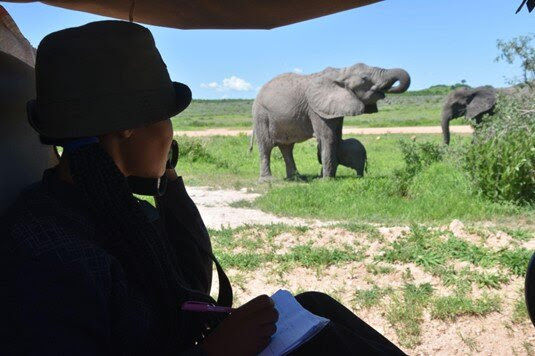Southern Tanzania Elephant Project update
- Tim Henshall

- Nov 26, 2024
- 2 min read

The Ruaha-Rungwa ecosystem in south-central Tanzania is a regionally and globally important area for elephants as it is home to one of East Africa’s largest elephant populations, estimated at around 15,600 individuals in 2021.
This population was significantly impacted by poaching for the ivory trade, which caused a >50% decline between 2009 and 2015.

Researchers from the Southern Tanzania Elephant Program (STEP) have been monitoring the elephants in Ruaha since 2015 to understand more how elephants use the ecosystem and how elephants were affected by and are recovering from the period of poaching.
Every month, STEP researchers spend around two weeks in the field (with Ikuka Safari Lodge as their base) collecting data on elephants and identifying individual males and family groups using features of their ears and tusks.
STEP has developed a database of known elephants which includes over 200 family groups and 400 bulls which helps us monitor the Ruaha elephants over time and build up detailed histories of how each family group is faring, including how many new calves have been born into each group, and to monitor whether or not calves survive.

One notable feature of Ruaha elephants is that there are many tuskless individuals. Whether an elephant has tusks or not is a genetically determined trait. Tusks are important to elephants for a number of reasons, such as for debarking trees and digging, and for males, tusks are used in duels with other males.
Tuskless matriarch of group number CC062 named Jasiri (Swahili for brave).
Tusklessness is usually a rare trait, but it is higher in populations that have experienced poaching because of selective removal of individuals with tusks. While most of the tuskless elephants in Ruaha are female, STEP have also identified two tuskless males in Ruaha. This is interesting as there are very few records of tuskless males in Africa!
Thankfully combined efforts of the Tanzanian government, civil society and the international community have greatly reduced the threat of poaching to elephants compared to previous years. STEP’s monitoring indicates that there are positive signs of the Ruaha-Rungwa population beginning to recover from the impacts of poaching, but also that this recovery will likely take many years.
As such, ongoing efforts to protect this population from poaching and to address human-elephant conflict important to ensure the recovery and long-term survival of this elephant populations and the ecosystem they inhabit.
For more info on STEP, please contact




Comments